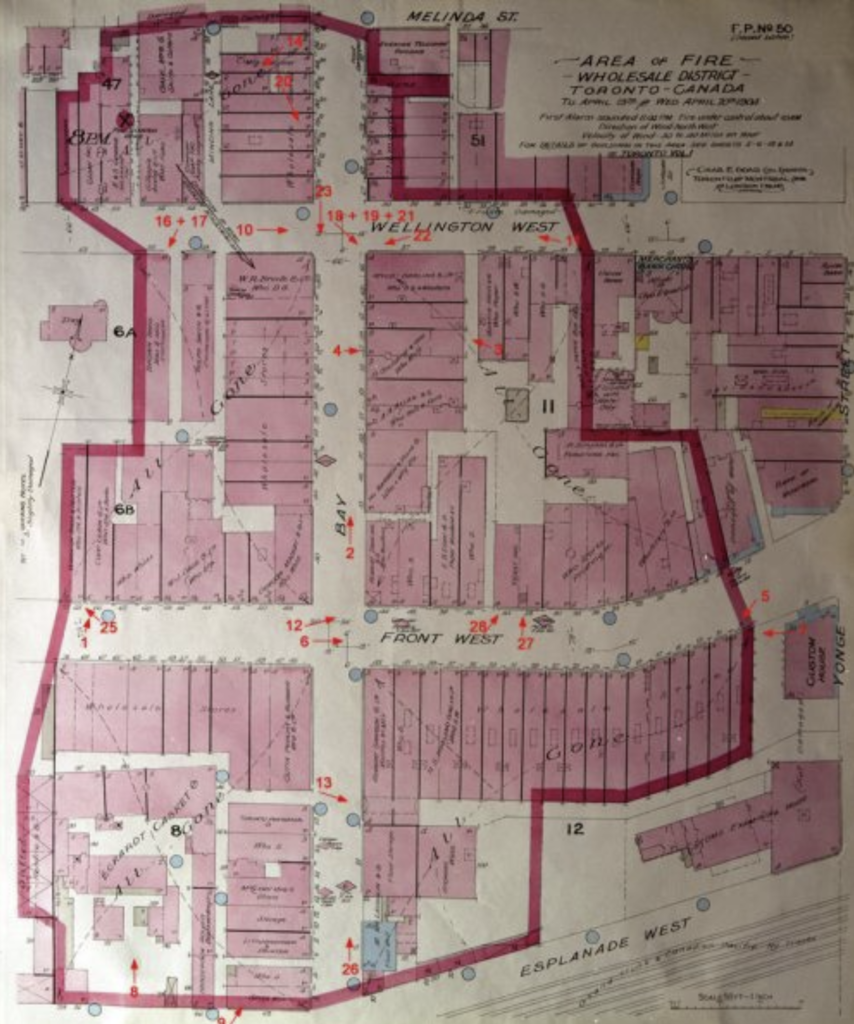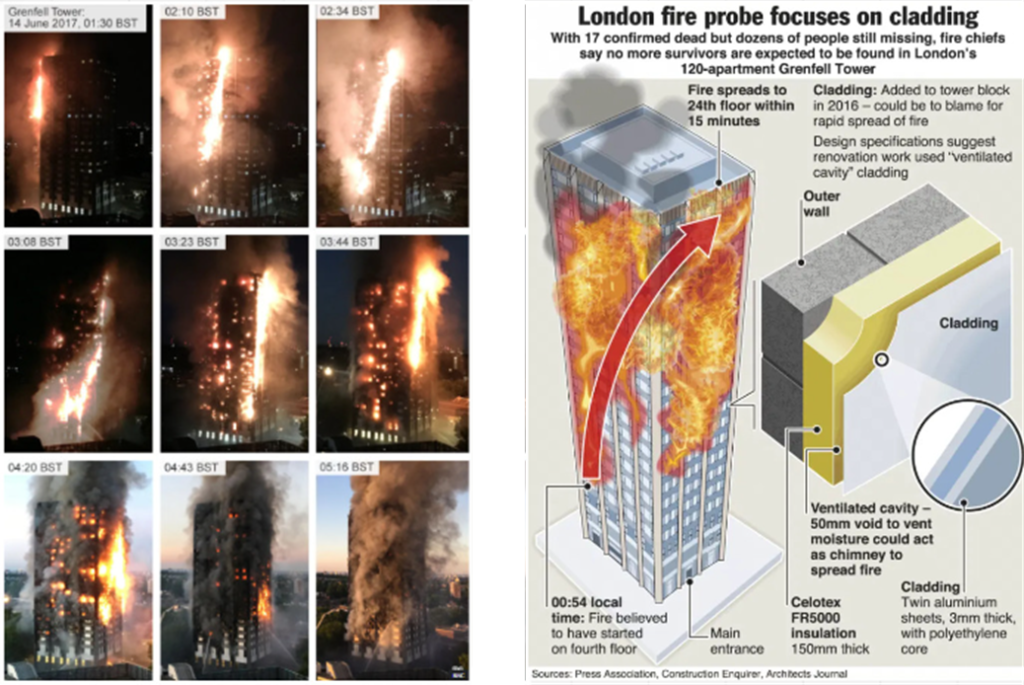How Modern Architecture Can Contain the Spread of Fire – Real Life Examples!
The Great Toronto Fire
On April 19, 1904, at about 8:00pm, a fire began in Toronto that would forever impact building design safety in Toronto moving forwards.
‘The Great Toronto Fire’ lasted less than 9 hours and destroyed approximately 100 buildings, leveling nearly 20 acres of land. Even in below freezing temperatures and snowfall, the fire spread from building to building with the additional aid of 30mph northwest winds. Firefighters from around Toronto, as far as Peterborough, answered the call to help put out the flames. At 4:30am, the fire was considered under control, but fires would still break out for the next few days and the ruins smoldered for two weeks. The main cause of the fire is unknown, but the reason for the spread was due to the lack of fire separations between buildings that could prevent the spread of fire (such as fire walls or wall assemblies with fire ratings).

Fast forwards 120 years
A fire began at 3am in the morning on April 16, 2024, at an apartment building in central Mississauga. Roughly ten fire trucks rushed to the scene, and building occupants stood outside and watched as the clouds of dark smoke and flame burned a balcony of the 11th floor unit of a 12 story residential building. This time however, the fire spread was contained (even though the fire was so hot that it burnt and melted the aluminum balcony!)
As you can see in the image, the fire did not spread below, left, or right. As expected, the burning hot smoke did damage the unit above, but the fire did not have time to catch on the floor. With the help of compartmentalization and fire separations, the design of the building prevented what could have been a much worse situation from occurring. One of our team members lives in the building — so they are needless to say, very thankful for the containment of the fire!

This fire containment is just one example of how the Ontario Building Code (OBC), which was created among other things after ‘The Great Toronto Fire’, has placed Canada’s building safety at a high international standard. The firewalls in the above project (i.e compartmentalization) mean the fire did not spread. Noncombustible cladding, and even tested combustible cladding options that meet the OBC standard are potentially options for slowing the spread of fire. Using the minimum permitted vent-space behind the cladding is another way to mitigate fire spread.
Grenfell
A famous fire event in London highlighted the importance of using the correct cladding and insulation materials. The Grenfell Tower Event started out as a fire in a residential unit in a tower that escalated quickly to engulf the whole building in flame due to the cladding, as well as insulation used. Once the fire spread to the vented cavity in the exterior wall, it quickly spread laterally and vertically around the whole building.

According to the Ontario Building Code, one of the requirements for cladding considered Combustible Cladding is to pass the CAN/ULS S134 test. This test uses a gas burner furnace with a window opening next to the tested cladding to see how fast the fire spreads and affects the material. To pass, no flame spread is to go beyond 5m, and the Heat flux is to be 3.5m < 35kW/m2. Architects are to reference this test when choosing cladding considered combustible.
Additionally, if fire does penetrate into the walls, there are building materials that would not produce (or produce less) toxic gases and chemicals during the event of a fire. For example, alternatives to plastic or aluminum which can expel high amounts of toxic gases and carbon when burnt, or plastic-based insulation.
We are always interested in helping you realize your ideas while keeping safety, health, and the environment a top priority!
Referenced Articles:
- The Great Fire of 1904 – https://www.toronto.ca/explore-enjoy/history-art-culture/online-exhibits/web-exhibits/web-exhibits-significant-events/the-great-fire-of-1904/
- The Great Toronto Fire – https://www.archives.gov.on.ca/en/explore/online/fire/index.aspx
- Grenfell Tower: What happened – https://www.bbc.com/news/uk-40301289
- ‘Major fail:’ Cladding blamed in Grenfell Tower fire wouldn’t pass Canadian safety tests – https://www.cbc.ca/news/canada/grenfell-fire-cladding-retrofit-london-1.4169561
